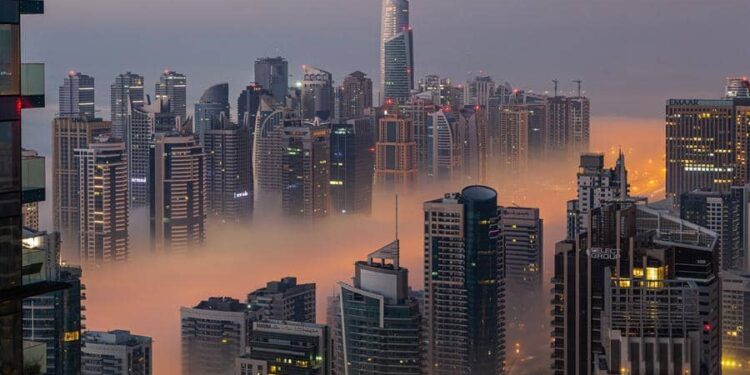The supply of residential real estate in Dubai is lagging behind the growth of the population, and in some areas of the emirate, there is a shortage of affordable housing in addition to luxury.
Industry leaders predict that even in 2024, supply will fall short of demand because of the large influx of foreigners and residents who are becoming buyers due to rising rental costs.
Fifty thousand new residential units, or almost half of the total population growth, were delivered in Dubai in 2023.
The population of the emirate increased by over 100,000 in 2023 to reach over 3.65 million by mid-December, according to data from the Dubai Statistics Center. As a result, there was a high demand for residential real estate.
The high flow of foreign professionals, workers, and investors into the emirate this year—drawn by increased investment returns and the availability of a range of residency permits—is blamed for the population growth.
The nine-month data from the Dubai Land Department confirmed this, showing a 33.8% increase in transactions to 116,116 transactions valued at Dh429 billion.
Some areas, such as the villa market, waterfront properties, and mature, established communities that are now “built out,” with little to no land left for further development, are examples of undersupplied areas that have contributed to price growth in recent years. Demand in these markets frequently outpaces supply, which propels price increases.
“Strong economic fundamentals, positive sentiment, and inbound population growth drive demand. Tenants have increasingly moved into home ownership instead of paying rising rents,” said ValuStrat analysts.
Real estate consultancy ValuStrat reported that there was a shortage of larger homes in desirable locations and a high demand for them in the first half of the year. More recently, though, as buyers look for more affordable properties and chances for potential future investment appreciation, the demand trend has moved towards more affordable areas. These places include Business Bay, The Greens, Jumeirah Village, Dubai Production City, Dubai Silicon Oasis, and Discovery Gardens.
“To keep up with the recent population growth, Dubai needs 50 percent more new properties entering the market every year. We have seen a significant demand for homes in central, prime, and established residential communities. However, due to a shortage of available land, constructing new residential properties in these areas is not feasible, resulting in most new residential projects and units coming to market within up-and-coming suburbs such as Dubai South, Jumeirah Village Circle (JVC), Arjan, and Townsquare,” said Paul Kelly, operations director at Allsopp & Allsopp.
Undersupply in coming years
The delivery of new residential property typically takes several years, encompassing various stages such as planning, financing, construction, and handover.
“Post-Covid-19, developers also had to deal with supply chain challenges and rising construction costs. Some of the delayed handover periods seen in recent new home launches suggest that developers have sought to quickly bring off-plan stock to market to benefit from strong buyer demand whilst also having to balance multiple projects in their completion schedules,” said ValuStrat.
Allsopp & Allsopp sees the handover of residential units in 2024 stands at 66,902. “I don’t expect we will hit that figure exactly, but we should be there or thereabouts.”
At the moment, Kelly doesn’t see supply can keep pace with the demand in 2024 and the near future.
“Although developers are responding to the current undersupply in the market by releasing 100,000 new off-plan units for sale in 2023, these units will not be handed over to end-users until 2025-2027. As a result, we predict that the undersupply of residential properties in Dubai will remain for the next 24-36 months,” he added.
Luxury segment shortage to dominate
The demand for luxury properties has outpaced that of the affordable and middle-class segments, so they will continue to experience the greatest shortages of newly constructed residential properties.
“Take any prime/luxury location in Dubai; the story is the same: there is simply no ready/available land to develop any new residential projects and any kind of scale to satisfy the current level of demand,” Kelly said, adding that in recent years, this impact has also been felt across more established premium residential communities such as Jumeirah Golf Estates and Arabian Ranches (where land is at a premium), and signs now point towards mid-market segments also running low on available land for new, large-scale residential construction projects.
Due to several short-term socioeconomic factors, Dubai has grown in popularity as a destination for new residents and businesses in recent years. Beyond this, the real estate market’s supply and demand are significantly influenced by Dubai’s 2040 master plan.




